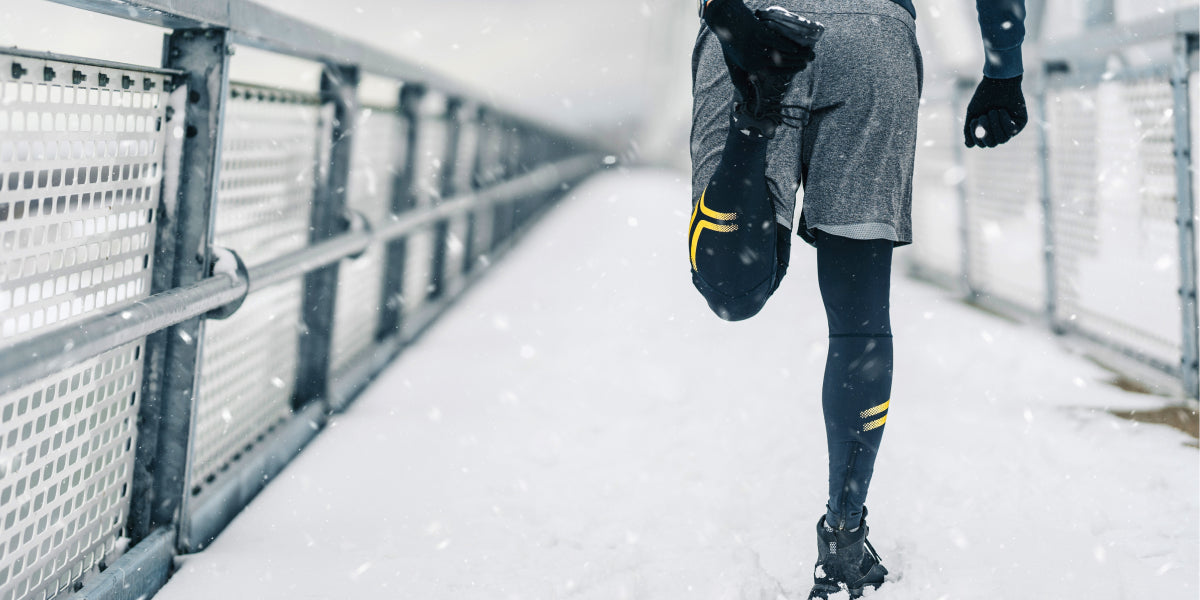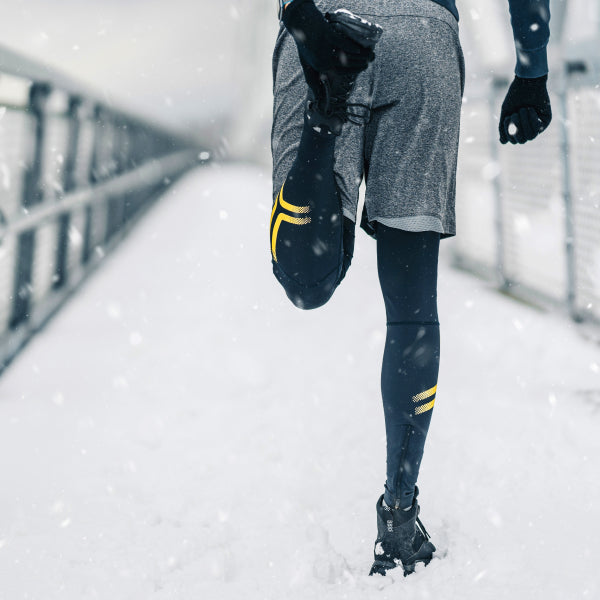Many athletes realize the importance of monitoring their hydration during workouts in hot and humid environments. When sweat is dripping off your body and your shirt is soaked, it is impossible to ignore your sweat loss. However, when temperatures start dropping these telltale signs of sweat loss aren’t so apparent. Some athletes may find themselves in a dangerous situation, and assume they aren’t sweating when cold, they actually are. When this happens, individuals often fail to properly monitor their hydration needs and don’t replenish accordingly. In short, yes, you are often still sweating even if it is cold outside and it isn’t as visible. Below are some of the factors you should consider for colder weather workouts.
Factor #1 : Low Humidity
Humidity is the concentration of water vapor present in the air. In the winter or other cold weather conditions, the air tends to be dry. As temperatures drop, the relative humidity also decreases. This can result in cold and dry conditions, with low humidity levels* which promotes the evaporation of sweat before it collects on the skin or shirt. Studies have demonstrated evaporation rates of sweat up to 23.7 oz per hour.
*Notable exceptions to this are coastal regions which may contribute to more moisture as well as snowy conditions.
⬢ Why you should care: Despite your cold weather workout gear not appearing as “wet” as they are in warmer weather conditions, you are in fact sweating. Due to evaporation rates, sweat rates under 23.7 oz per hour may not be observed as sweat accumulation on your skin or shirt. However, the Nix Hydration Biosensor seals off the area under the patch, preventing evaporation in this region, and is therefore able to read your sweat loss accurately.
At Nix, we use the Nix Index, which is an environmental score displayed on a scale of 0 to 100. It is based on Relative Humidity, Wind Speed, Solar Load and Temperature, while also taking into account Dew Point and Altitude, all from your phone’s GPS location. The higher the Nix Index, the more sweat you are likely to experience during your workout. We recommend taking a look at your workouts and learning what your sweat rate is in a wider range of environments and conditions, particularly those with temperature drops.
Factor #2: Sense of Thirst
In colder climates, our sense of thirst is blunted, so athletes tend to start workouts in a dehydrated state and replenish lower quantities of fluids during their workout.
⬢ Why you should care: Drinking to thirst prompts athletes to replace only about 50% of the fluids that they have lost in warm and moderate temperatures, but even less in cold. However performance impairments are still seen in cold weather. Monitoring fluid losses and electrolyte losses is important to ensure you are replenishing appropriately.
⬢ Should I still carry water or an electrolyte beverage when working out?
Yes, it is still important to hydrate and replenish electrolytes in colder weather. While carrying hydration with you during your workout is required in order to replenish your losses in real time, you can still leave your hydration behind and prioritize replenishment as soon as your workout is done and you’ve seen your total losses reflected in the Nix app. Your total fluid needs may be less in the colder weather, but they are still substantial enough to lead to performance impairment if not properly replenished.
Factor #3 - Your Sweat Composition Changes:
Your sweat composition will change based on a multitude of factors, most notably with lower sweat rates. With lower sweat rates, individuals can have dramatically different electrolyte needs. This phenomenon is a result of an electrolyte reabsorption function in the sweat gland. As sweat rates increase, the reabsorption can’t keep pace, allowing a greater volume of electrolytes to pass through into sweat deposited on the skin. This means the appropriate hydration formula can be significantly different for workouts with different sweat rates. This doesn’t just occur with colder weather; differences in sweat composition will also occur based on your workout type, intensity, clothing and more. For example, you will likely have a different sweat composition with your interval or speed workouts versus your long runs/rides.
To illustrate the differences we’ve seen in colder weather, here are two examples from our users.
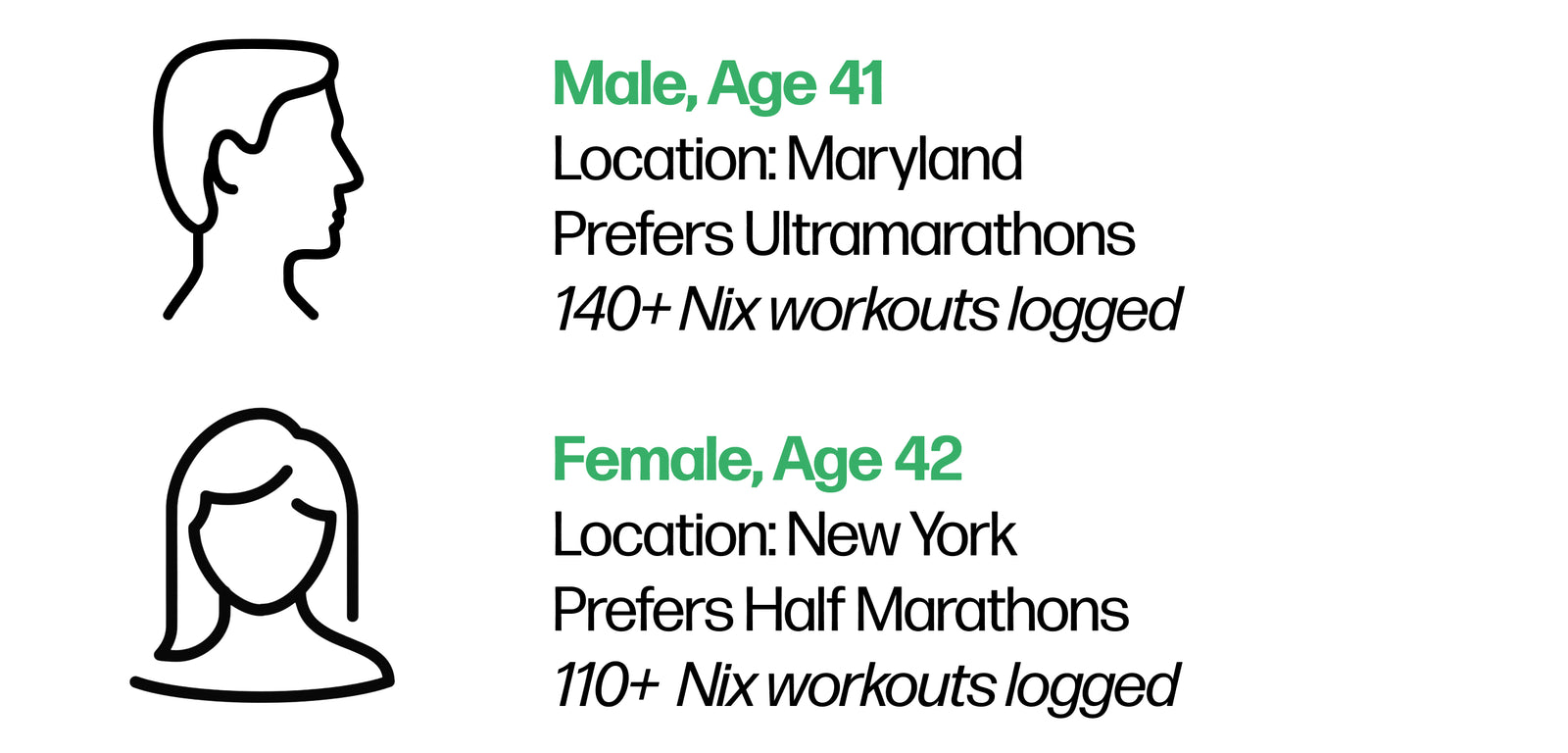
Outdoor Running Comparisons
We reviewed the workouts of two users of similar age and geography. Their sweat and electrolyte losses at various Nix Index values illustrates how hydration needs are highly personalized.
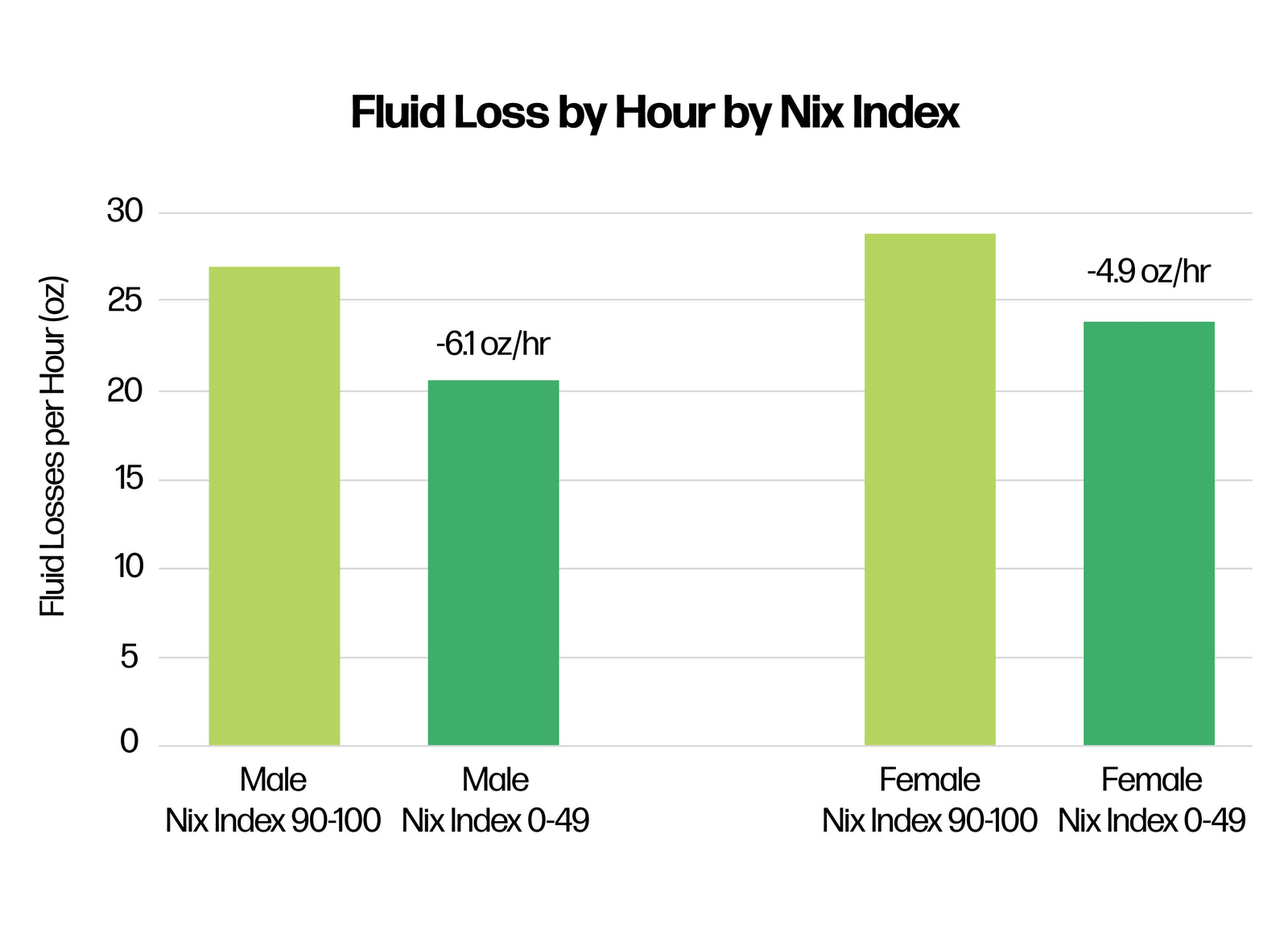
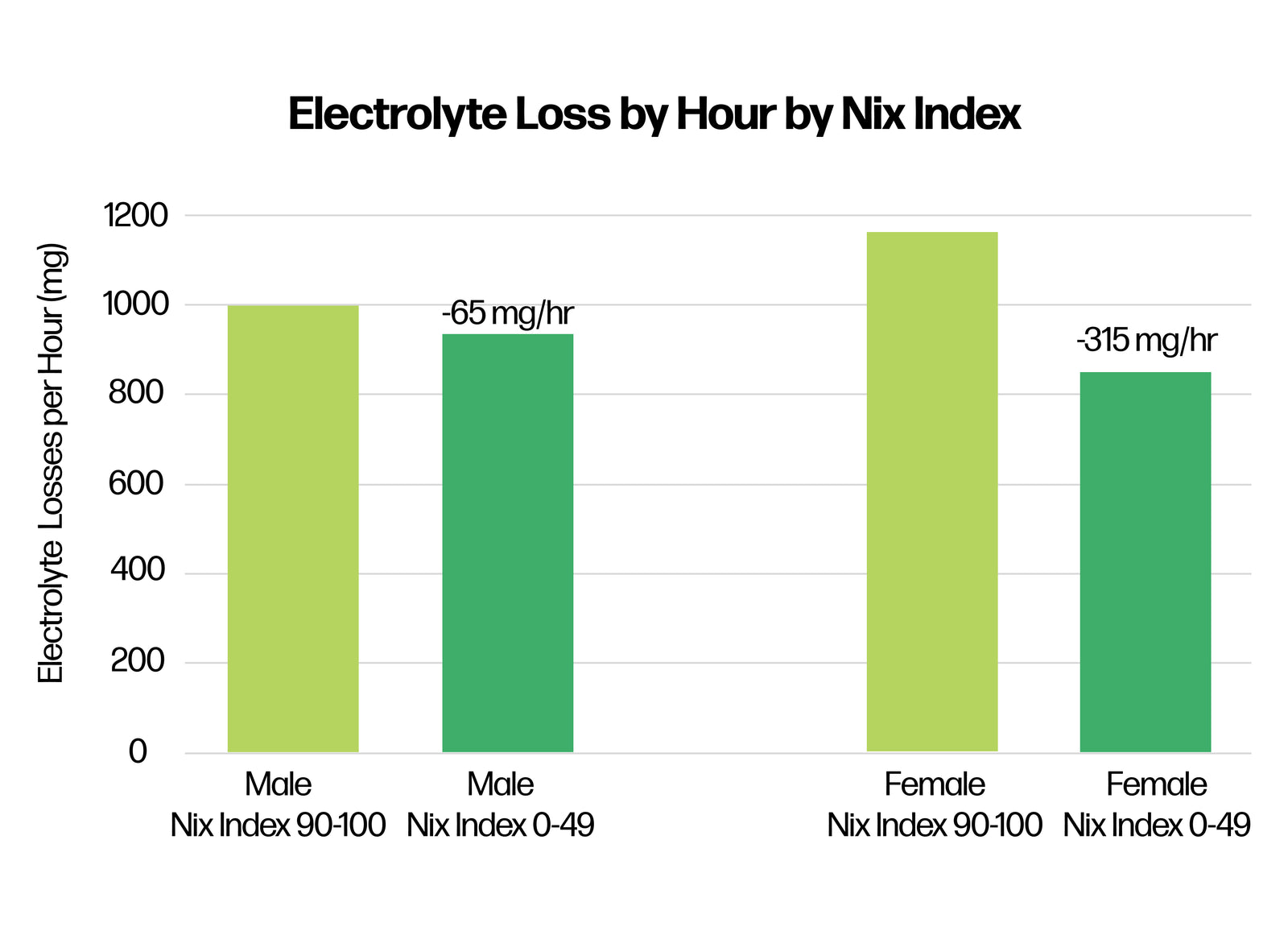
⬢ Why you should care: The electrolyte brand that is optimal for your replenishment needs may change during different environmental conditions. In this example our female sweats ~17% less per hour, and losses 27% less electrolytes per hour. This could be the difference between replenishing with Nuun Sport or Naak. Our male sweats ~22.5% less per hour, and losses about 22% less electrolytes. For him this is the difference between using Gatorade Endurance or SkratchSport.
In summary, low humidity, often correlated to lower temperatures, promotes faster evaporation of sweat which obscures athletes’ perceptions of how much fluid they’re actually losing. In conjunction with reduced thirst, athletes are at risk of dehydration during cold weather workouts - and will suffer the same performance impairments seen during warm weather workouts. Perhaps most importantly, an athlete’s optimal hydration formula may be totally different in cold versus warm weather workouts. Athletes should measure - not guess - their fluid loss and electrolyte needs in all seasons to obtain their optimal hydration strategy.




